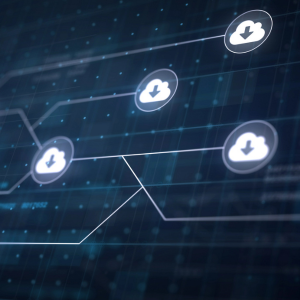
Las empresas enfrentan una decisión clave al elegir soluciones de software: ¿Deben optar por software tradicional o adoptar la flexibilidad del Software como Servicio (SaaS)? Comprender las diferencias, beneficios y casos de uso ideales de cada uno puede ayudar a los CTOs y líderes empresariales a tomar decisiones informadas alineadas con sus estrategias de crecimiento.
¿Qué es el Software Tradicional?
El software tradicional, también conocido como software on-premise, requiere instalación en computadoras individuales o servidores empresariales. Las empresas deben adquirir licencias, realizar actualizaciones manualmente y gestionar la infraestructura para garantizar su correcto funcionamiento.
Principales Características:
- Pago único por licencia con costos adicionales de mantenimiento.
- Requiere recursos de TI internos para administración y actualizaciones.
- Accesibilidad limitada: solo puede usarse en dispositivos con licencia.
- Altos costos iniciales en hardware, servidores e infraestructura.
What is SaaS Development?
SaaS (Software as a Service) is a cloud-based software delivery model where applications are hosted and maintained by a service provider. Users access the software via a web browser, eliminating the need for local installations and maintenance.
Key Characteristics:
- Subscription-based pricing model with predictable costs.
- Automatic updates and maintenance handled by the provider.
- Accessible from anywhere with an internet connection.
- Scalable and flexible to meet business growth needs.
Key Differences Between SaaS and Traditional Software

Deployment & Maintenance
- Traditional Software: Requires on-site installation, manual updates, and dedicated IT management.
- SaaS: Cloud-hosted, automatically updated, and maintained by the provider.
Cost Structure
- Traditional Software: Higher initial investment, plus ongoing maintenance and infrastructure costs.
- SaaS: Lower upfront costs, predictable subscription pricing, and minimal IT overhead.
Scalability & Accessibility
- Traditional Software: Limited to installed devices and often requires complex upgrades.
- SaaS: Easily scalable, accessible from any device with an internet connection.
Security & Compliance
- Traditional Software: Security depends on in-house IT capabilities.
- SaaS: Leading providers offer robust security, compliance with industry standards, and regular updates to address vulnerabilities.
Benefits of SaaS Development for Businesses
Cost-Effectiveness
SaaS eliminates the need for expensive hardware and IT resources, reducing total cost of ownership while providing continuous updates and support.
Flexibility and Scalability
Businesses can scale their SaaS subscriptions up or down as needed, making it a perfect solution for growing companies.
Faster Deployment
Unlike traditional software that requires extensive setup, SaaS solutions can be deployed in minutes, allowing businesses to start using the software right away.
Enhanced Security
Reputable SaaS providers implement advanced security measures, such as encryption, multi-factor authentication, and compliance with standards like GDPR and HIPAA.

When to Choose SaaS vs. Traditional Software
Choose SaaS if:
- You need a scalable, cost-effective solution.
- Your team requires remote access and collaboration.
- You want minimal IT maintenance responsibilities.
Choose Traditional Software if:
- Your business operates in a highly regulated industry requiring on-premise storage.
- You need full control over software configurations and security.
- Internet reliability is a concern for daily operations.
Conclusion
For most businesses, SaaS development offers a modern, scalable, and cost-effective approach to software solutions. While traditional software may still have its place in specific industries, the growing demand for flexibility, security, and efficiency makes SaaS an increasingly popular choice for enterprises worldwide.
Interested in SaaS Development?
Let’s talk today and discover how VANX can help transform your business with cloud technology.
